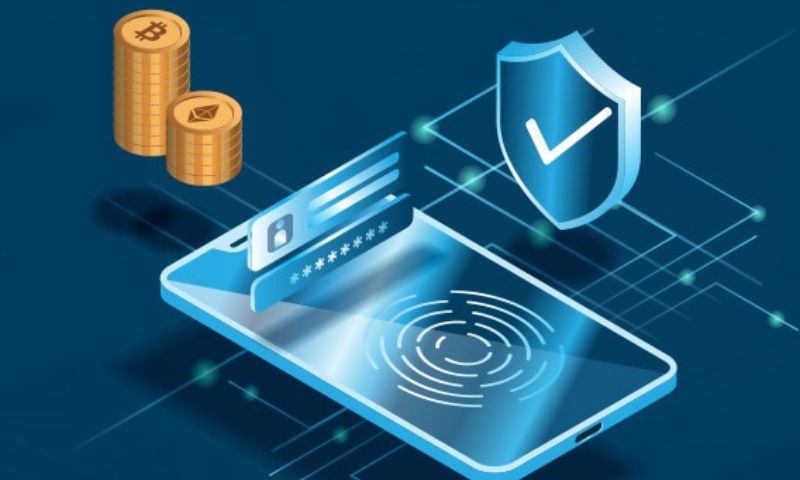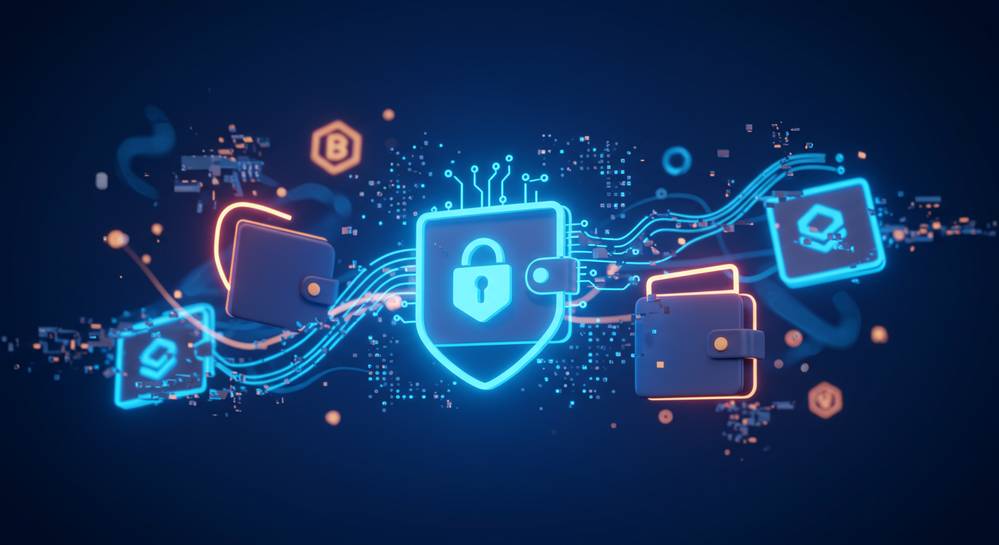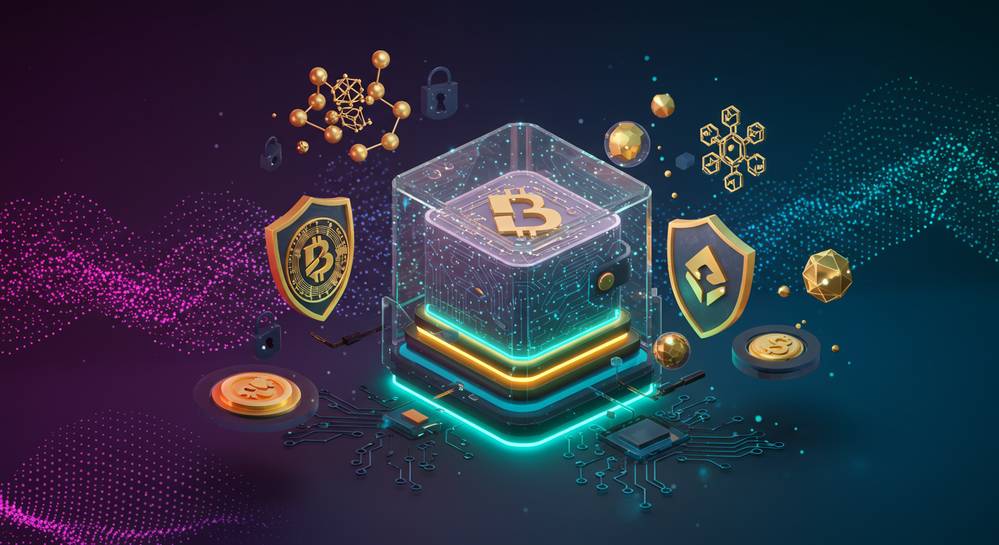In the whirl of the crypto world, your hot wallet is a treasure chest that hackers are eager to plunder. You’ve heard the tales of woe—digital riches swept away in a click. I’m here to armor you with best practices for securing hot wallets. First, know the soft spots where thieves break in, then learn how to fend them off. We’ll dive into multi-layered shields like multi-factor authentication, the life-saving importance of updates, and mapping out a rescue route with backups and seed phrases. Tailor your transactions to dodge danger, choosing the right tools for the job. Ready to become your own crypto-guardian? Let’s lock down your loot.
Understanding Hot Wallet Vulnerabilities and Preventions
The Risks of Hot Wallet Exposure and How to Mitigate Them
Hot wallets are like your physical wallet but for crypto. They stay online, which makes them handy for quick trades and payments. Yet, they face risks too. Online hackers, phishing tricks, and plain carelessness can put your digital coins at risk. But fear not! You can act to protect your crypto.
First up, let’s talk strong passwords. They are your first defense. Use a mix of letters, numbers, and symbols, and never reuse them. Also, turn on two-factor authentication. This adds another check and makes it harder for hackers to get in.
Next, watch for phishing attacks. These are fake messages or websites tricking you into giving your info away. Always double-check links and senders’ details. If it seems fishy, it probably is a phishing attempt.
Be careful with public Wi-Fi. These networks aren’t safe for hot wallet use. If you must, use a secure VPN.
For extra safety, consider mixing hot wallets with cold storage. Cold wallets store crypto offline and are harder to hack. They’re great for saving, not spending.
Recognizing Phishing Attacks and Safeguarding Against Online Wallet Hacking
Phishing is when you get an email, text, or site link that looks real but isn’t. It’s a trick to steal your wallet details. To prevent falling for this, learn what these attacks look like. They often have poor spelling or offer deals too good to be true.
Use software that scans for bad links. It flags when something’s not right. Remember, real services won’t ask for your private keys by email or phone.
Update your wallet app regularly. Updates fix weak spots and keep hackers away.
Always back up your wallet. If your device breaks or gets lost, a backup means you still can access your crypto.
Last, learn about wallet types. Head to trusted sites to compare hardware wallets and hot wallets. Each has its uses, pros, and cons. By knowing them, you pick what’s best for your needs.
Being careful with your hot wallet keeps your crypto safe. Keep your software fresh, use complex passwords, and steer clear of phishing. Mix in some cold storage for even better security. Remember, the more steps you take, the tougher it is for the bad guys.
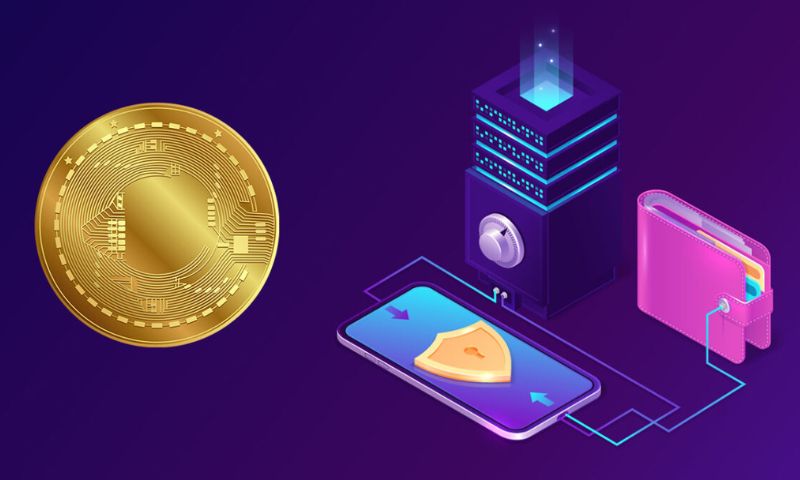
Implementing Advanced Security Measures in Hot Wallets
Multi-factor Authentication and Its Role in Hot Wallet Protection
Secure your crypto coins by using not just one, but many proofs to unlock your wallet. Picture multi-factor authentication (MFA) as a talent show. To impress, you can’t just sing; you also need to dance and maybe juggle! It’s the same with your hot wallet. It needs a password, but also a code from your phone or even your fingerprint. This stacking up of checks helps shield your money from thieves.
The Importance of Regular Software Updates and Secure Wallet Interfaces
Think of software updates like booster shots for your wallet. They help fight off new viruses and bugs that try to steal your coins. Keep an eye out for update alerts, and when they pop up, don’t wait. Click and update to build a strong defense for your wallet. A secure wallet looks clean and is easy to use. Anything odd, like a messy layout or hard steps, can suggest risks. Stick to wallets you can trust and keep them updated.
Security in crypto takes more than a good memory. It’s a set of smart moves to keep your coins safe. Always use many proofs in MFA. Update your wallet like you’d update your phone. Use wallets that feel right and make sense. They’re your money’s best friend and your key to a worry-free crypto life.
Strategic Backup and Recovery Plans for Hot Wallets
Crafting a Secure Backup Strategy for Digital Currency
When it comes to securing your digital cash, a solid backup strategy is your best friend. Think of it as a life vest for your crypto. If things go south, your backup is there to keep you afloat. Now, you may ask, “What’s a strong backup strategy?” Well, it’s a road map to safeguard your coins, even if your main device gets lost or broken.
First things first, understand this. Your backup should include all vital wallet data. This data allows you to regain access to your crypto. Keep it secret and safe. Many choose to write down or print out this info. They keep it in secure spots like a locked drawer or a safe. Some go the extra mile with a safety deposit box at a bank.
Next up, two-factor authentication, or 2FA, is crucial. It’s an extra layer of defense. Say someone does get your password. If you have 2FA, they still can’t get in. It’s like having a second lock on your door.
It’s a good time to point out that not all 2FA methods are equal. Using apps like Authy or Google Authenticator is safer than getting codes via SMS. Text messages can be intercepted, so stick with the apps for tighter security.
Don’t back up to the cloud without thinking twice. Cloud services can be hacked. If you do use the cloud, encrypt your data first. Encryption jumbles up your data so hackers can’t read it without the key.
Always ask, “Where do I keep my backup?” You want several copies in different places. Think about what might happen if there was a fire or flood. Spread your backups around to keep them safe from the same disaster.
Finally, test your backups regularly. Make sure they work and that you know how to use them to restore your wallet. This is your safety net. It’s no use if you don’t know how to fall into it.
The Critical Nature of Seed Phrases for Wallet Recovery
Hands down, your wallet’s seed phrase is the most important piece to the backup puzzle. “Why’s it so key?” you might wonder. A seed phrase is a list of words that store all the info needed to recover your wallet. Lose it, and you could lose your crypto for good. Keep it, and you can get your wallet back from almost any mess.
Write your seed phrase down. Use paper or metal, something that doesn’t break or fade easily. Then, find a couple of places to stash it away securely. Remember, if someone else finds it, they can take your crypto. Make it as hard as possible for that to happen.
Don’t just hide it, though. Make sure you and anyone you trust can find it if needed. If something happens to you, your loved ones should know how to use your seed phrase to access your funds. Talk about this with someone you trust deeply.
Seed phrases also go by “recovery phrase” or “backup seed phrase,” but they all mean the same. They spring your wallet back to life, even if everything digital goes kaput. No gadgets, no problem. With your seed phrase, you can rise again.
And this, my friends, is where you anchor your hot wallet’s safety in the choppy seas of the crypto world. Keep it locked down, backed up, and ready for anything. Your future self will thank you.
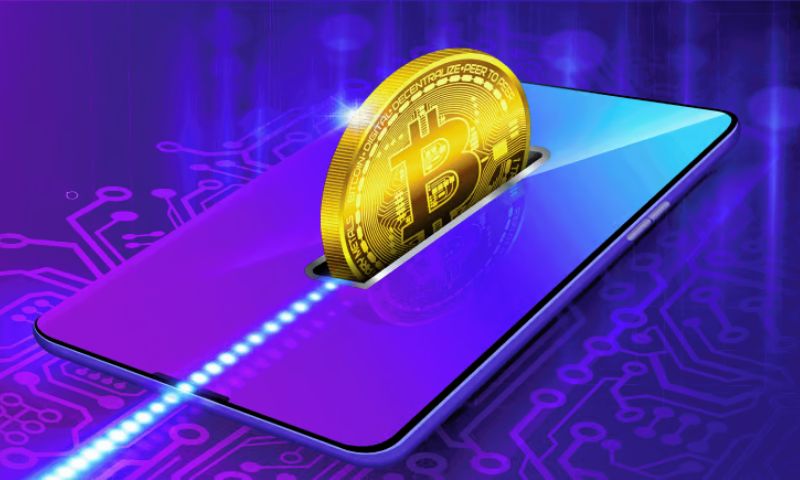
Best Practices for Safe Hot Wallet Transactions and Maintenance
Leveraging Encryption and Safe Transaction Protocols
Got a hot wallet? Keep it safe! Hot wallets are super handy, but you need to guard them well. Just like you lock your house, you must lock your digital cash. Here’s where encryption saves the day. It’s a smart way to turn your wallet info into secret code. This code is tough to crack, making your wallet tough to hack.
Use encryption on your hot wallet. Only you can decode it with your unique key. Next, let’s talk about safe sends and gets. A good rule? Double-check every address before you send crypto. Better safe than sorry, right? And never, ever share your private key. Think of it as your hidden superpower for your wallet!
Distinguishing Between Secure and Risky Wallet Applications and Services
Now, picking the right wallet is key. Choose one that’s known for being safe. If you’re stuck, look for reviews by other users. They’ll tell you if an app is friend or foe. Trustworthy apps will ask for proof of who you are. They might use something like SMS or email codes. Folks call this two-factor authentication, and it’s a real lifesaver.
“On the go” and need to pay with crypto? Secure mobile wallets have got you covered. But, like a careful shopper, pick apps that go the extra mile to protect you. You wouldn’t want to grab a wallet that’s easy for baddies to sneak into.
Hot wallets are online and easy to get into. That’s good and bad. Good ’cause you can reach them anywhere. Bad ’cause hackers know this too. They might trick you into giving info. That’s called phishing. Always be on your toes and think twice before you click.
Remember, your heart might trust public wi-fi, but your hot wallet shouldn’t. Public networks can be weak spots where hackers love to hang out. So, send and manage your crypto only over trusted networks.
What about storage? Using cold storage, like a hardware wallet, adds a thick wall. It’s like a vault for your digital bucks. Hardware wallets are like cold storage. They’re offline, so they’re super tough for thieves to tackle. Plus, keeping some of your coins there means less risk for your hot wallet.
Backups can be a lifesaver. Got a backup? You’re ready if something goes south. Think like a scout and always be prepared. Write down your seed phrases. They’re your crypto lifeboat. Lock ’em up tight, but don’t forget where you put the key! Regular backups? Do them. They’re like snapshots of your wallet to keep your coins snug.
Last up, we’ve got updates. Keep your wallet’s software fresh. Outdated software is like a welcome sign for hackers. See a new update? Grab it! It’s got the latest shields against nasty bugs and hacks.
Remember, your hot wallet loves care. Give it encryption, safe buys and sells, and pick smart apps. Back up your stash, and stay sharp with updates. Stick with these tips, and you’ll be the superhero keeping your crypto safe.
We’ve explored hot wallet risks and protective steps you can take. Remember, dodging scams and hacking starts with knowing the dangers like phishing and exposure. Make your wall tough to crack with things like multi-factor checks, and keep your software fresh and tight. Don’t forget, solid plans for backing up and fixing up your wallet are key. This means having a secure backup and knowing your seed phrases well.
For calm and easy hot wallet use, always use strong encryption and safe ways to handle your coins. Tell which apps and services are safe, and which are not. Stay smart and update often. Your digital cash counts on it! Keep these tips close to keep your online cash safe and sound.
Q&A :
What are the essential security measures for hot wallets?
Securing hot wallets begins with fundamental practices designed to safeguard digital assets. One should always create strong, unique passwords for wallet access and implement two-factor authentication (2FA) for an added layer of security. It’s advisable to keep software updated to the latest versions, as these updates often patch vulnerabilities. Additionally, be cautious of phishing attempts and only download wallet apps from verified, reputable sources.
How often should I update my hot wallet security?
Regular updates are crucial for maintaining hot wallet security. Ensure that your wallet application and any associated software are always up-to-date with the latest security patches and improvements. Typically, wallet providers release updates in response to emerging threats or to introduce new features that enhance security. It’s good practice to check for updates at least monthly, but always apply critical security updates immediately upon release.
Is it safe to store large amounts of cryptocurrency in a hot wallet?
Storing large amounts of cryptocurrency in a hot wallet is not recommended due to their online nature, which makes them more vulnerable to cyber attacks. Hot wallets are better suited for smaller amounts and for facilitating daily transactions. For significant sums of digital currency, cold wallets (offline storage options like hardware wallets) offer a higher level of security against online threats and are the preferred method for long-term storage.
What backup procedures should I follow for my hot wallet?
Back up your hot wallet by recording the seed phrase or private key and storing it securely in a location separate from your wallet. This information allows you to regain access to your assets if your device is lost, stolen, or compromised. Make multiple backups if necessary and consider using secure storage options such as encrypted USBs, safety deposit boxes, or secure offsite locations. Test your backup periodically to ensure that recovery is possible when needed.
Can utilizing a VPN enhance hot wallet security?
Using a VPN can indeed enhance hot wallet security by encrypting your internet connection and masking your IP address, making it more difficult for hackers to intercept or trace your online activities. Especially when managing your wallet on public Wi-Fi networks, a VPN provides an extra layer of protection against potential vulnerabilities. However, while a VPN is beneficial, it is just one aspect of a comprehensive security approach and should be combined with other best practices for securing hot wallets.

